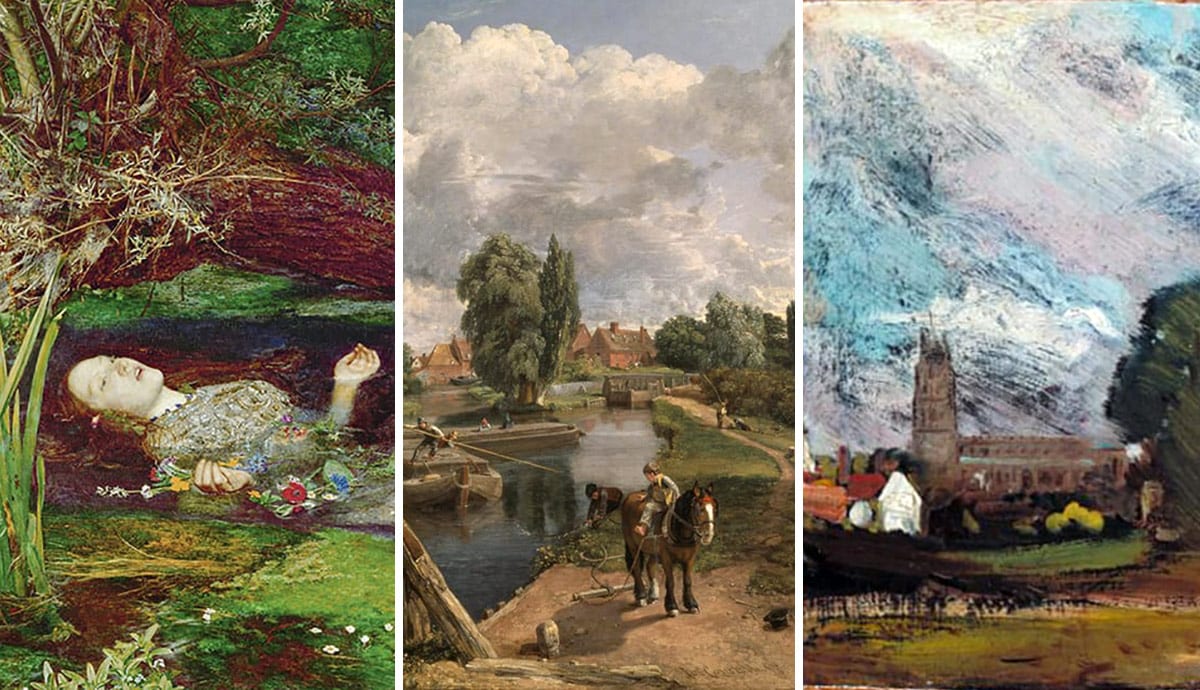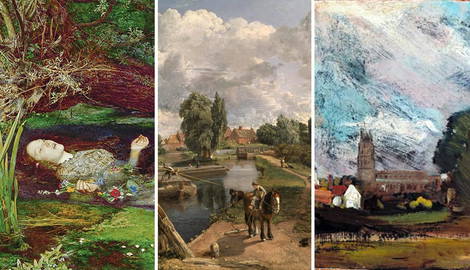
summary
- Naturalism: This movement focused on portraying subjects in their natural state, emphasizing unembellished, rural scenes that reflect the true essence of life.
- Realism: Emerging in the mid-19th century, this movement concentrated on depicting everyday life with accuracy and truthfulness, moving away from idealized or fictionalized portrayals.
- Impressionism: Established in the late 19th century, this movement revolutionized the use of light and color, capturing fleeting moments through vibrant brushstrokes and en plein air painting.
The idea of portraying the world as it truly appears is a relatively recent development in the world of art history. Before Naturalism and Realism paved the way for the Impressionist movement, artists favored romanticized interpretations of their surroundings. These movements can be confusing as they are closely related and often overlap. Below, discover the artistic movements of Naturalism, Realism, and Expressionism and explore their similarities, differences, and overall effects on the course of art history. These movements not only shaped the direction of visual arts but also played a pivotal role in redefining the relationship between subject and artist.
Naturalism

The Naturalist movement emerged in the 19th century, marking a shift toward depicting subjects as they truly appear. Until this point, both landscapes and human figures in art tended to be idealized and stylized, following classical traditions. When artists like John Constable started embracing a more realistic style, he remarked that “there is room enough for a natural painture” (a type of painting). The Naturalist movement went on to become one of the major trends of the century, laying the groundwork for Impressionism and modern art. This emphasis on accuracy and detail set a new standard, inspiring artists to explore the unedited beauty of their surroundings.

Naturalism often involved plein-air painting and rural naturalism. Plein-air painting refers to outdoor scenes and moments from natural life, like in the above work by Benjamin Williams Leader. Rural Naturalism was a slightly different term encompassing all scenes of rural life.
Realism

Realism can be defined by a few characteristics. Realist paintings, beginning in the mid-19th century, depict everyday life and look almost photographic. Realism attempts to forego all stylization for a grittier worldview. Paintings of the Realist movement include rural landscapes and working-class life. They also feature people in cafes, life on city streets, and a more frankness about the human body and sexuality.

As opposed to the religious and mythological undertones of earlier eras, realism tried to take artificiality from art. The term realism was coined by the French novelist Champfleury sometime in the 1840s and has been exemplified in the work of Gustave Courbet, John Everett Millais, and Jean-Francois Millet.
Impressionism

Developed in France during the 1800s, Impressionism is characterized by painting “on the fly”, usually outdoors, rather than in a studio using sketches. Generally, impressionist paintings depicted landscapes with the desire to paint what was seen in as realistic a way as possible. Claude Monet led the impressionist movement along with other Paris-based artists and painters from Britain like John Constable. The turning point from realism to impressionism was the use of light.

Artists like Pierre-Auguste Renoir often used the impressionist style to paint lively city scenes full of people, asserting that landscapes weren’t the only subject matter to which impressionists were limited. Artists were finding that painting outside, quickly and in the moment, gave them a chance to understand light and the way it affects color in many contexts. Brushstrokes became more rapid and broken, representing how light offers a fleeting quality to what we see.
What Do They Have in Common?

These art movements all had the same goal: to portray life as it was. All three of these movements started in the 19th century and dispelled the idea of high art and the academic nature of art at the time. When looking at the work that came out of these three movements, one can see obvious similarities between them. Large landscapes, true-to-life expression, and the doing away with romanticized versions of everyday life that dominated the Renaissance and other earlier artist periods. Each movement, while distinct, contributed to a broader artistic revolution.
What Makes These Movements Different?

Although they are closely related, Naturalism, Realism, and Impressionism each possess distinguishing qualities. Naturalism and Realism are the most closely related of the three, though they are still separate movements. Naturalism focuses on subjects in their natural state, which is typically rural and unembellished. Realism is considered a broader movement, depicting any subject, even fictional ones, with a realistic lens. For example, Ophelia by Sir John Everett Millais is in the realist style even though it depicts a fictional character from one of William Shakespeare’s plays.
Impressionism diverges from both of these movements, revolutionizing the use of light and color with vibrant hues and distinctive brush strokes. In contrast to the other movements, Impressionism tends to be more colorful, hardly ever using shades of brown or black. Further setting their work apart, Impressionists also frequently painted en plein air, capturing scenes directly from life.
How Do Naturalism, Realism, and Impressionism Work Together?

19th-century artwork was redefined by Naturalism, Realism, and Impressionism, steering the art world away from what was expected of classical painting. The artists in these three movements depicted what they saw in the world around them, not what they wished they’d seen or what they imagined. In making reality a central theme, these movements paved the way for modern realism and post-Impressionism, influencing artists like Vincent van Gogh and Paul Gauguin. The work of artists from these three movements led the way to artwork as we see it today.







